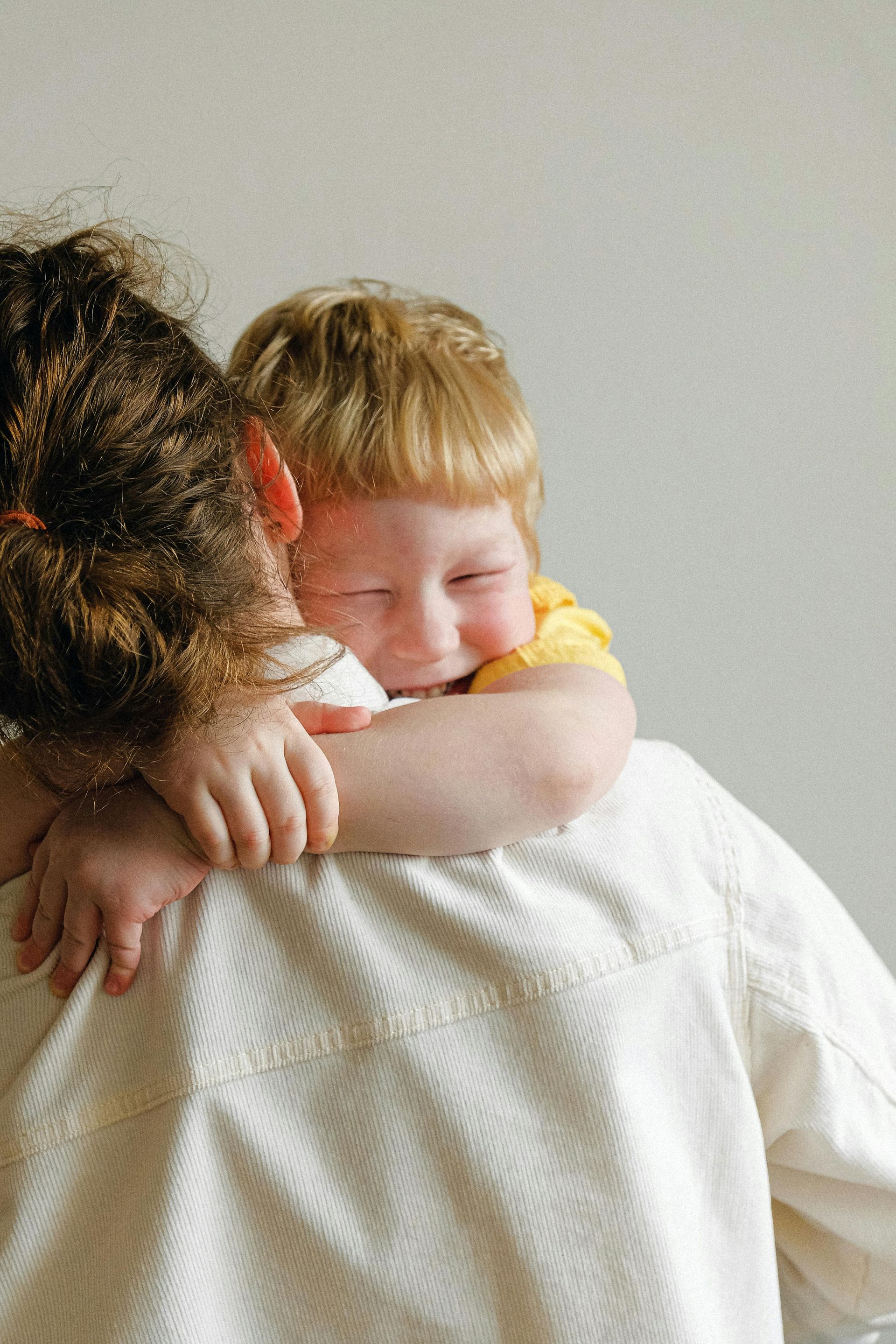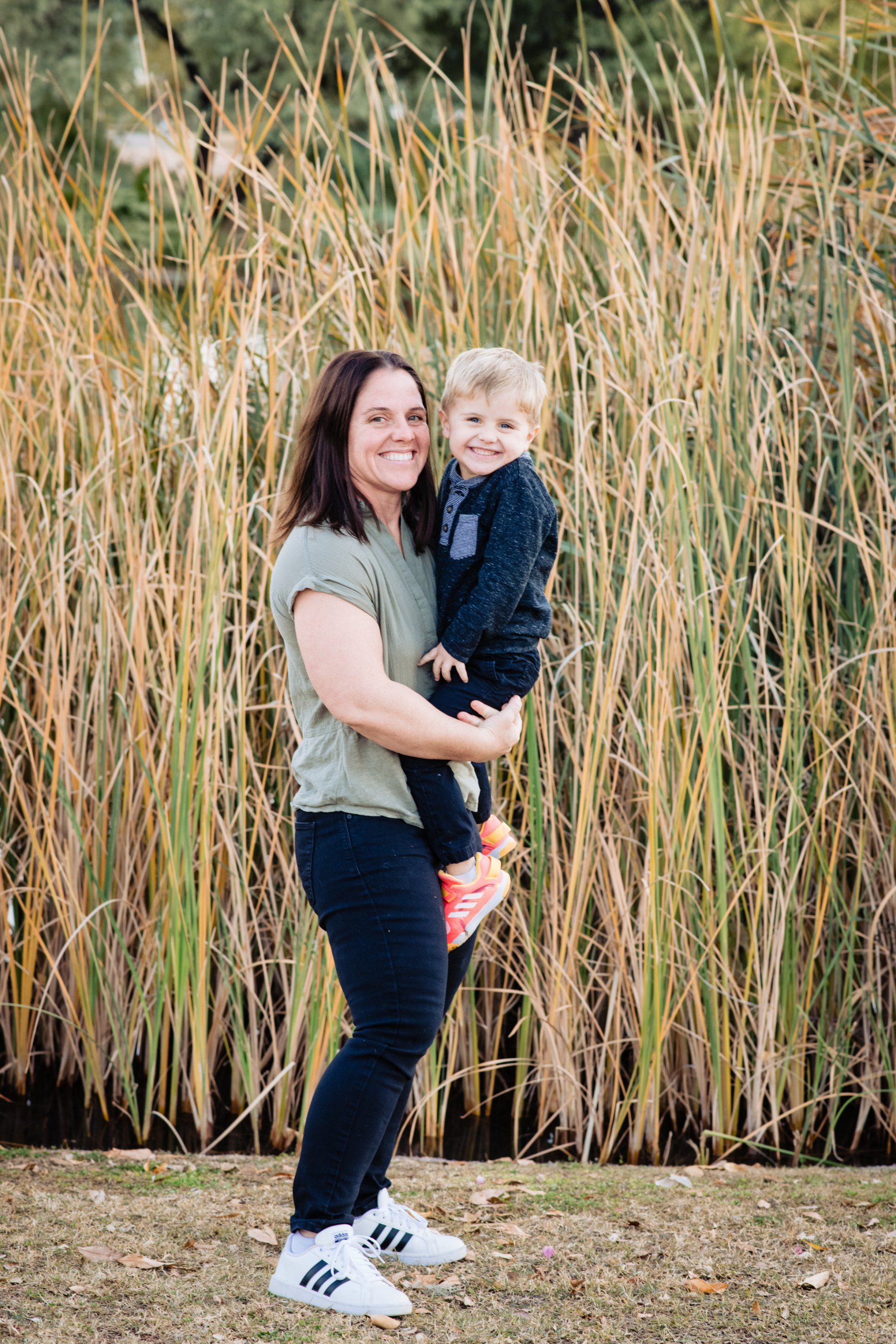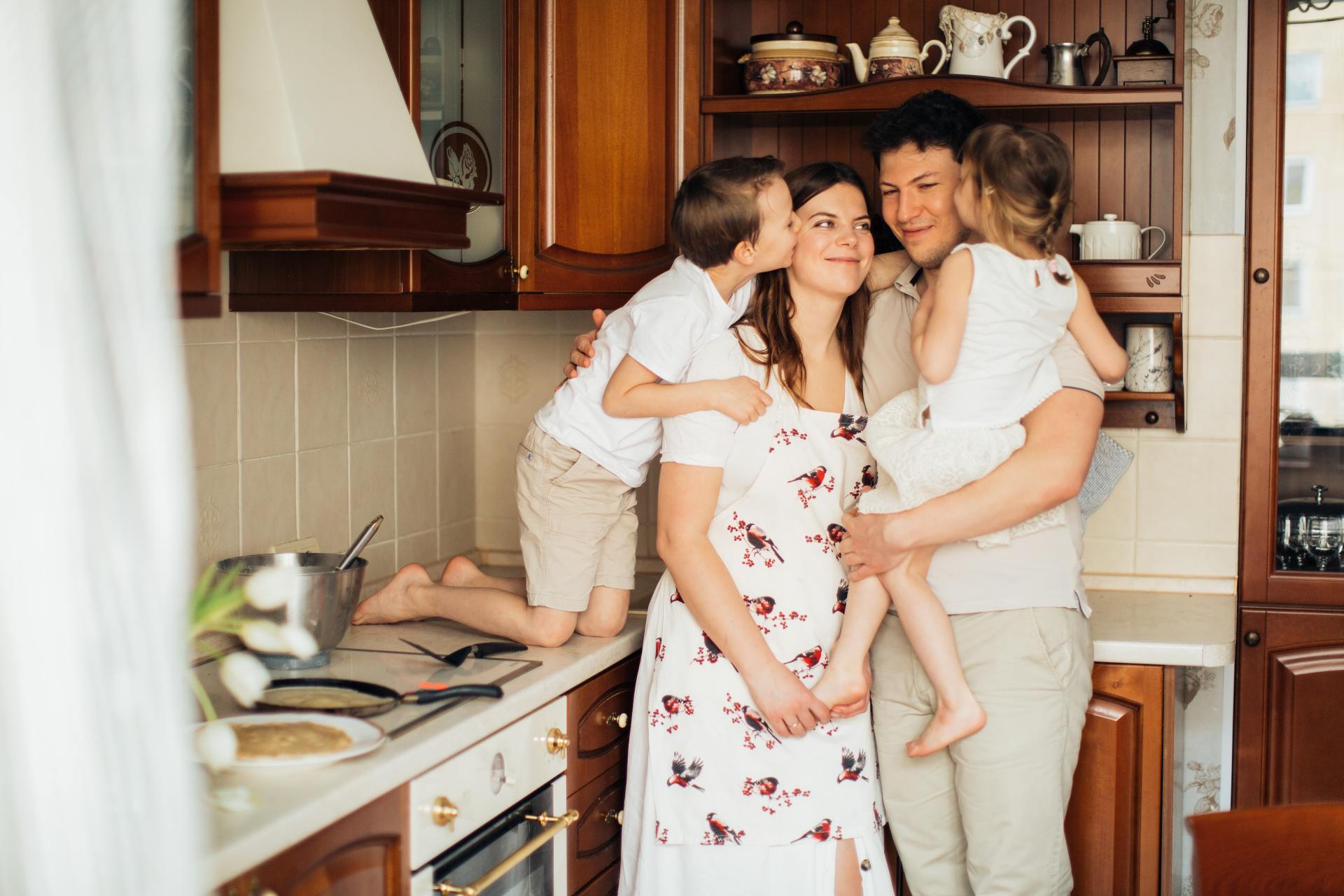A RED CARPET WELCOME FOR DISPLEASURE
What the Child is Learning by Feeling

“One of the most ironically counterintuitive twists of parenting is this: the more we welcome our children’s displeasure, the happier everyone in our household will be.” – Janet Lansbury
Emotions Are Waves
Emotions are waves. They rise, they peak, and they fall. They begin and they end. They are not to be feared because no wave lasts forever.
Here is the key, when the body no longer sees certain emotions as dangerous, the nervous system is less likely to tip into fight-or-flight dysregulation. And when we stay regulated, we can think clearly and respond to those emotions with intention.
When children and adults learn that all feelings can be felt and survived, emotions lose their power to control us. The very act of feeling them builds resilience and choice.
A Red Carpet Welcome
Your child begins to complain, object, or disagree… and you know where this is headed. The storm is coming. They are about to argue, grow angry, maybe yell, maybe even lose control.
Do not fear. Yes, it can be intense. But the earlier we begin practicing this shift, the easier it becomes for both us and our children.
Picture your angry child like a baby goat. It lowers its head, rears back, and charges straight into your shin. Thud! Then it bounces away, circles back, and comes charging again. Instead of bracing for impact, you scoop up the little goat and scratch it under the chin. It lets out an angry “BAAHHHH!” and suddenly, its wild intensity is almost endearing.
In the same way, when strong emotions come charging at us, we do not have to brace or push them away. We can meet them with openness, even gentleness. Rather than treating anger, sadness, or frustration as intruders, we can welcome them as visitors. Roll out the red carpet. Invite them in. Give them the coziest seat in the house. Treat them as honored guests. There is no such thing as overstaying their welcome here.
Anger is welcome. Sadness is welcome. Frustration, disappointment, bitterness, every single one of them is welcome. They do not need to make sense to me. They do not need to be rational or tidy. They just need to be felt.
Emotions are always, always, always welcome here.
What the Child is Learning by Feeling
Children become truly responsible when they are able to choose how they respond to their emotions. But this ability does not come from lectures or punishments. It comes from practice, the practice of feeling emotions.
When a child is allowed to feel the full wave of an emotion without interference, they discover that emotions rise, peak, and fall on their own. Interference looks like rushing them through a feeling, trying to distract them, minimizing their upset, shaming them for “overreacting,” or fixing the problem before they have had a chance to experience it. When we step in this way, we unintentionally teach children that their emotions are unsafe or unwelcome.
Without interference, children learn that emotions are survivable. Over time, they begin to notice the sensations in their body, name what they feel, and understand that the feeling will not overwhelm them. This is the foundation of emotional regulation.
Emotional growth requires safety, not control. A child who has not yet practiced feeling an emotion all the way through cannot yet choose a thoughtful response. They must first build tolerance for discomfort.
Judgment, Shaming, and Labeling
One of the biggest barriers to emotional safety is the way adults judge the feelings or label the child. When we shame a child for being upset, minimize their disappointment, or call them “dramatic,” “bratty,” or “too sensitive,” we send the message that their inner world is not acceptable. Over time, this teaches them to doubt or suppress their emotions rather than trust them.
It is not our role to decide which experiences are worthy of an emotional response. What feels small to us may feel enormous to a child. It is none of our business to dictate how someone else feels. We are not the gatekeepers of what is valid to feel.
When we judge, we create distance. When we shame or label, we add a second wound on top of the first, the pain of the emotion itself and the pain of being misunderstood. Without realizing it, we train children to hide their feelings rather than work through them.
When we release judgment, we create connection. Instead of evaluating whether their feelings are justified, we can accept them as they are. This opens the door for validation, empathy, and eventually, growth.
Fixing and Convincing
There is a window of time before a child tips into full-blown dysregulation when their rational mind is still somewhat accessible. In this window, it may be possible to appeal to their thinking side, to offer perspective, or to gently guide them toward a solution.
But once a child is overwhelmed and “offline,” that window is closed. No amount of reasoning, problem-solving, or coaxing will work. In fact, attempts to fix or convince in that state usually escalate the storm. The clearest sign that the window has closed is that our efforts are rejected right away. They may not be screaming or fuming yet, but if they immediately push back, argue harder, or double down on their displeasure, they are already dysregulated. They are not open to thoughts or suggestions in that moment.
This is when our most helpful response is to resist fixing, resist convincing, and simply hold space until the wave has passed.
Resisting the Urge to Fix It
Parents often see solutions right away. We want to calm the storm, restore peace, and help our child move forward. Offering fixes feels rational, responsible, and caring. But during dysregulation, the nervous system cannot process solutions. When we jump in too early, children often feel dismissed or pressured to “move on,” which makes them dig in deeper.
Resisting fixing does not mean we abandon problem-solving. It means we wait until the storm has passed. Once a child is calm, they can reflect, consider options, and hear our ideas as support instead of pressure.
Think of it like planting seeds. If we scatter them in the middle of a storm, they wash away. If we wait for the skies to clear, those same seeds can take root.
Resisting the Urge to Convince them
Parents also fall into the trap of trying convince children to being flexible. We say things like, “Don’t let it bother you,” or “It’s not a big deal.” But real flexibility cannot be talked into existence. It is built through practice.
Take the example of an older brother whose little brother is staring at him. He yells, “Stop looking at me!” A parent might respond, “Just ignore him, it’s not worth getting upset about.” But in that moment, it is upsetting to him. Convincing him not to feel irritated only leaves him frustrated with his brother and misunderstood by his parent. Instead, we can validate: “You really don’t like when your brother looks at you. That is bothering you right now.” Over time, with practice, his tolerance grows. What once felt unbearable slowly becomes something he can shrug off.
Or picture a child at the ice cream shop. They have their heart set on mint chip, but it is sold out. They collapse in disappointment: “No! This is the worst!” Parents naturally want to jump in with, “Pick another flavor,” or “Fine, then you don’t get anything.” But those words shortcut the practice they need most. Instead, you might say, “You really wanted mint chip. It’s so disappointing that they don’t have it today.” Once they have space to feel the disappointment, they may recover enough to say, “Okay, I’ll try cookie dough.” That is flexibility. It comes from feeling the hard emotion, letting it pass, and then discovering new possibilities.
Validating: The Skill of Acknowledgment and Empathy
Validation is one of the most powerful tools we have in parenting, yet one of the least understood. Many adults did not grow up being validated themselves, so it can feel foreign or unnecessary at first. But validation is the bridge between raw emotion and emotional safety. It tells a child, “What you feel is real and allowed.” Without this acknowledgment, children often escalate, because they sense no one sees their inner world.
Validation is not about making the feeling go away. It is about helping the child see that their inner experience is recognized and held. This alone can reduce intensity because the child no longer has to fight to be understood.
What Validation Does Not Mean
Validation can be tricky to grasp at first because many of us confuse it with giving in, agreeing with, or apologizing to our child.
Sometimes we apologize out of fear of a meltdown, even when there is nothing to apologize for. Imagine your child is upset because you ate the last piece of pizza, which was meant for everyone. Out of anxiety, you might grovel: “I am so sorry, I will buy you another pizza tomorrow, I promise I will make it up to you.” This kind of apology shifts into bargaining, as if their displeasure is too much for us to handle.
Other times, we slip into agreeing. Picture your child coming off the basketball court after a tough loss. They shout, “We lost because the ref was terrible! He ruined the whole game!” As the adult, you know the referee made some bad calls, but you also know many factors contributed to the loss. Instead of validating, you might agree just to avoid a meltdown: “Yeah, the ref was awful, it was his fault.” That kind of agreement may calm things momentarily, but it teaches the child that blaming someone else is the right way to handle disappointment rather than learning to feel it and move forward.
And often, we give in. Imagine your child at the store, begging for candy. You say no, they scream and cry, and you hand over the candy with, “Fine, just this once.” The meltdown stops, but the lesson becomes clear: big displays of displeasure are an effective way to get what I want.
In all three cases, the child’s feeling is not actually being honored. Instead, the adult is scrambling to make the feeling go away through apologizing, agreeing, or giving in. The result is that the child never gets to practice riding the wave of the emotion. They do not learn that the feeling itself is safe, temporary, and survivable.
What Real Validation Looks Like
Validation is simply about acknowledging what is true for the child in that moment, letting them know their inner experience is real and safe to feel.
Validation is done by describing what you notice in a calm, matter-of-fact way, without judgment. You let your child know that what they are feeling is real and safe to feel.
Empathy is the heart of validation. To validate, we must access our own capacity for empathy, which means remembering how feelings like anger, disappointment, or sadness feel in our own body. We do not actually need to feel what our child is feeling in the moment, and we should not mirror their dysregulation. Instead, we draw on our knowledge of what those emotions are like and reflect it back to them.
For example, if your child becomes upset because their sister is playing with their dice, you might gently acknowledge what you see. You could say, “You seem upset that your sister is playing with your dice.” As the feelings grow, you might add, “Ugh, yeah, this seems hard. You wish she wasn’t playing with your dice.” Calm, matter-of-fact words like these communicate safety and understanding without judgment.
Validation also means being open to correction. A child may say, “I’m not angry, I’m disappointed!” We can model humility and attunement by responding, “Oh, I misunderstood. You are feeling disappointed.” This shows them that we are not labeling or controlling their feelings but genuinely trying to understand.
For some children, even verbal validation can be too much. It can tip them further into fight or flight. In those moments, read the room. Sometimes subtle body language is all that is needed: a soft facial expression, a gentle nod, or a sound like “mmm” or “ugh” to show understanding. This communicates, I see you, this is hard, without overwhelming them with words.
Validation communicates: It is okay to feel what you feel. You do not need to teach in this moment, and you definitely do not need to explain why they should not feel that way. You do not tell them how to feel differently. You simply allow them to have their experience.
Holding Boundaries During Meltdowns
Holding space and validating does not mean giving in or allowing our child to do whatever they want. Part of the learning is this: When I freak out or lose it, I do not get what I want. There is nothing for me in that place.
This does not mean we stop them from freaking out. Quite the opposite: they are welcome to be angry, pout, whine, yell, or collapse in tears. We will not force them to stop. In fact we will validate their experience. What they will not get is their way through the meltdown.
Example: The Water Park Goggles
You are headed to the water park and your child forgot their goggles. You are not willing to turn back, and you do not need to be willing.
Child: “I forgot my goggles, oh no! Can we go back?”
Mom: “Oh shoot, sorry. No, we can’t. It’s too far.”
Child: “Ugh, maybe we can buy new ones?”
Mom: “Mmmm, that won’t work either, not from here. They are overpriced and we have nice ones at home.”
At this point, one of two things might happen. In the first scenario, your child cannot yet tolerate the disappointment. They melt down. The yelling, the pouting, the tears, the refusal to enjoy the day all pour out. In this case, your role is to decide what you are willing to do. You might be willing to ride out the storm, letting your child pout and mope their way in, trusting that eventually the wave will pass and the day may still end in fun. Or you may not be willing to carry that mood into the park, and so you call it a day and head home. This is not a punishment if it comes from a place of care, meeting everyone’s need for rest, reset, or mental health. If there are other kids in the mix, sometimes the only option is to survive while welcoming your child’s displeasure. They get to be miserable at the water park. You do your best to enjoy what you can, holding the boundary firm: we are not buying goggles today.
In the second scenario, your child has developed more capacity to stay in the conversation. It might sound like this:
Child: “I forgot my goggles, oh no! Can we go back?”
Mom: “Oh shoot, sorry. No, we can’t. It’s too far.”
Child: “Ugh, maybe we can buy new ones?”
Mom: “Mmmm, that won’t work either, not from here. They are overpriced and we have nice ones at home.”
Child: “Maybe Sister would let me use hers when she is on the slides?”
Sister: “Sure, you can use mine if I am not using them.”
This is not ideal, but it is far closer to a solution than what comes from screaming and losing it. The lesson becomes clear: when I lose it, solutions, problem-solving, and negotiation end. When I stay in the conversation, possibilities remain.
And here is the key. If your child cannot yet tolerate the full feeling of disappointment, then they will not be able to stay in the conversation. That is okay. Little by little, as they practice tolerating the emotional experience, their capacity will grow. Our job is not to rush that process but to welcome it and hold the space until they are ready.
The 70/30 Mindset
One way to make peace with these moments is to expect them. If we go in with the mindset that seventy percent of the time our children may be in some form of “not pleased”, we will not be as frustrated when that is the reality. Because that is the reality. Childhood is full of displeasure.
And yet, when we allow those feelings to move, the other thirty percent becomes genuine joy, connection, and gratitude. Those moments shine all the brighter, not because we forced them, but because they rose naturally once the waves of harder emotions were allowed to pass.
Here is the good news: the balance can shift. When my child practices feeling emotions, riding the waves over and over, their capacity grows. Little by little, seventy/thirty may become sixty/forty. And maybe one day my child will be pleased half the time. Isn’t parenthood fun?
One Emotion Opens the Door to the Next
Emotions often move in a cascade, where one feeling naturally opens the door to another. Beneath anger we often find grief. Sadness, when felt, can create space for hope, joy, or inspiration. Disappointment, when honored, can soften into gratitude. This flow is natural, and it is how our emotional system is meant to work.
We often fear so-called negative emotions because unfelt emotions usually drive unhelpful behaviors. Anger is not the problem. Sadness is not the problem. Disappointment is not the problem. The challenge is what happens when our nervous system cannot tolerate these emotions. When we are completely dysregulated, we are far more likely to lash out, shut down, or act in ways that are hurtful.
But the truth is this: if our nervous system could tolerate the full experience of anger, sadness, or disappointment, we could feel them and still choose a healthy, mature response. Negative emotions do not have to result in negative behavior.
This is exactly why kids need parents. Our role is not to stop them from feeling anger, or to teach them to suppress it, because suppression only leads to bigger eruptions later. Instead, our role is to hold the space and keep everyone safe while the feelings move through. Sometimes that means we step in to prevent harm, sometimes it means we set firm boundaries, but it never means shutting down the emotion itself.
As Dr. Jill Bolte Taylor, author of My Stroke of Insight, explains: “When a person has a reaction to something in their environment, there’s a 90-second chemical process that happens in the body; after that, any remaining emotional response is just the person choosing to stay in that emotional loop.”
Children will loop. Sometimes they will stay in an emotion for 20 minutes, 45 minutes, even hours. Our job is not to stop the loop but to welcome it, to hold space for as long as it takes. Over time, with practice, their ability to navigate emotions will strengthen.
Knowing they are safe and that all of their feelings are welcome becomes the foundation of emotional intelligence. This foundation allows them, little by little, to move from blindly reacting to their emotions toward choosing a thoughtful response.
Reflection Questions
- When my child begins to show displeasure, what patterns do I notice in my first instinctive response?
- Which emotions in my child do I find most difficult to welcome, and what might that reveal about my own relationship with those feelings?
- In what ways do I usually respond when I feel strong emotions myself, and how might that response shape what my child learns from me?
- Think of a time when I held a boundary while also validating my child’s feelings. What stood out about that moment, and how did it affect both of us afterward?










